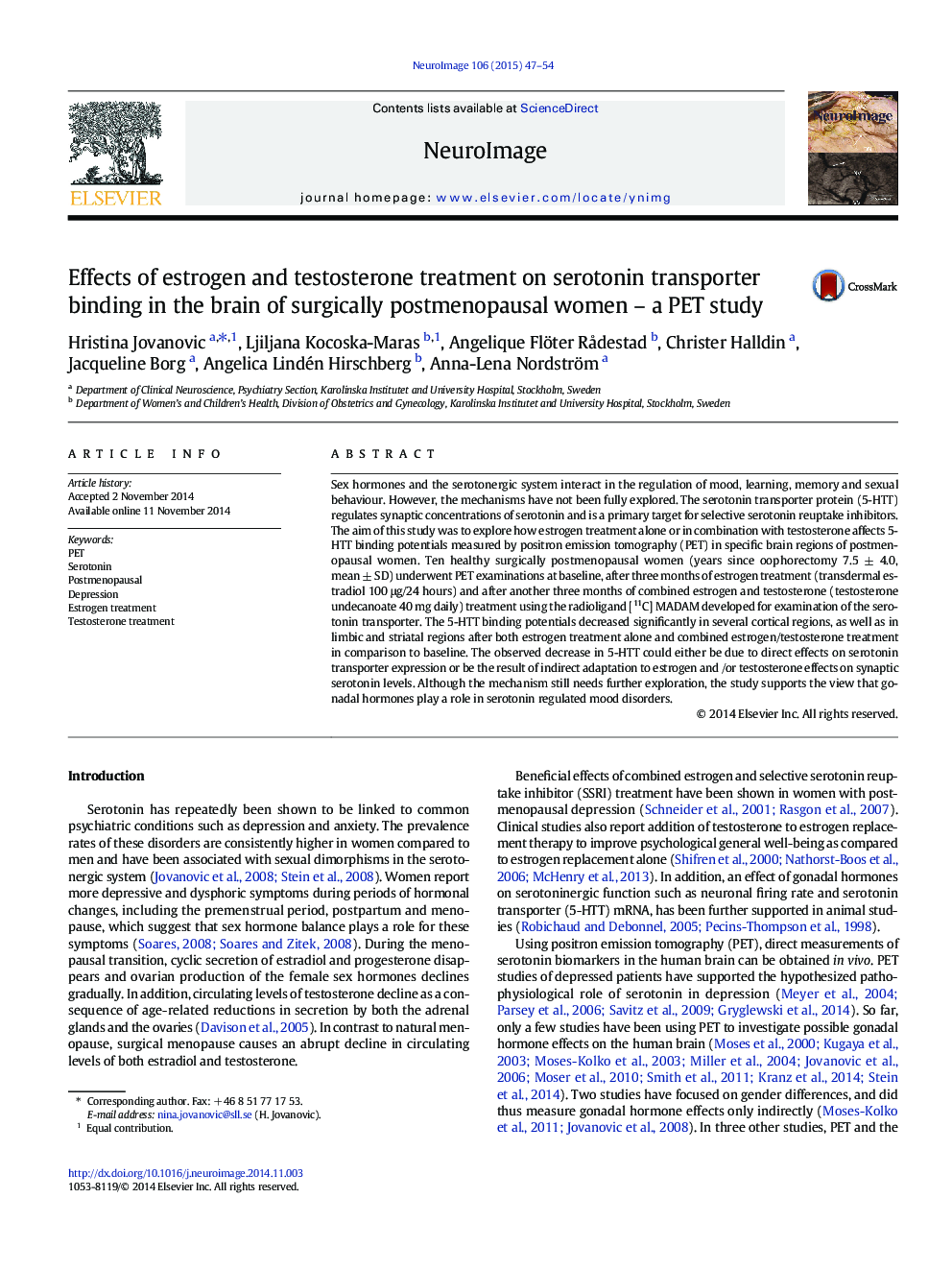| Article ID | Journal | Published Year | Pages | File Type |
|---|---|---|---|---|
| 6026534 | NeuroImage | 2015 | 8 Pages |
Abstract
Sex hormones and the serotonergic system interact in the regulation of mood, learning, memory and sexual behaviour. However, the mechanisms have not been fully explored. The serotonin transporter protein (5-HTT) regulates synaptic concentrations of serotonin and is a primary target for selective serotonin reuptake inhibitors. The aim of this study was to explore how estrogen treatment alone or in combination with testosterone affects 5-HTT binding potentials measured by positron emission tomography (PET) in specific brain regions of postmenopausal women. Ten healthy surgically postmenopausal women (years since oophorectomy 7.5 ± 4.0, mean ± SD) underwent PET examinations at baseline, after three months of estrogen treatment (transdermal estradiol 100 μg/24 hours) and after another three months of combined estrogen and testosterone (testosterone undecanoate 40 mg daily) treatment using the radioligand [11C] MADAM developed for examination of the serotonin transporter. The 5-HTT binding potentials decreased significantly in several cortical regions, as well as in limbic and striatal regions after both estrogen treatment alone and combined estrogen/testosterone treatment in comparison to baseline. The observed decrease in 5-HTT could either be due to direct effects on serotonin transporter expression or be the result of indirect adaptation to estrogen and /or testosterone effects on synaptic serotonin levels. Although the mechanism still needs further exploration, the study supports the view that gonadal hormones play a role in serotonin regulated mood disorders.
Related Topics
Life Sciences
Neuroscience
Cognitive Neuroscience
Authors
Hristina Jovanovic, Ljiljana Kocoska-Maras, Angelique Flöter RÃ¥destad, Christer Halldin, Jacqueline Borg, Angelica Lindén Hirschberg, Anna-Lena Nordström,
